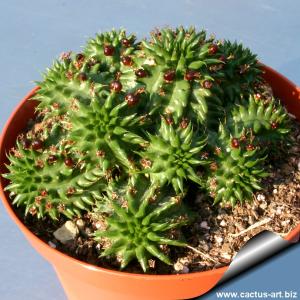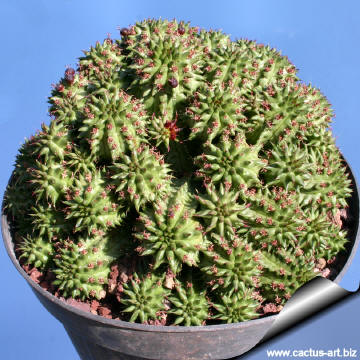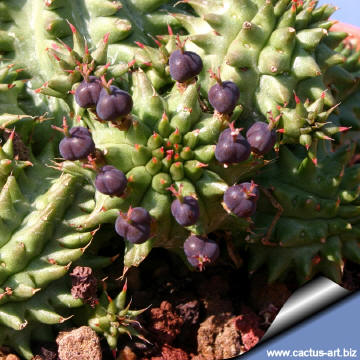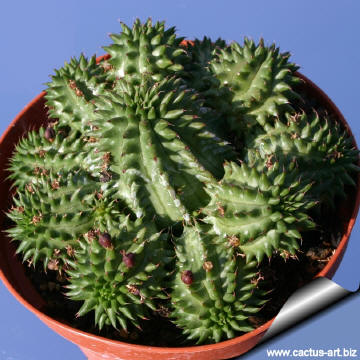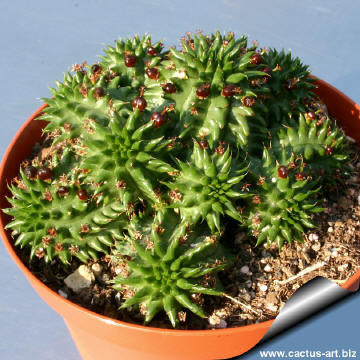-
x
Descrizione
|
L'Euphorbia susannae è una grande piccola pianta e una tra le più belle e caratteristiche specie del genere euphorbia. Scientific name: Euphorbia susannae Marloth (also suzannae ) This species was discovered in 1925 by Dr. John Muir and was described 4 years later by Dr. Marloth. Origin: It is endemic to a few limited areas in little Karroo. Landsmith district, Cape Province, South Africa Habitat: They grows in small population, sometime with only a few individual on very sandy and stony ground, often with white quartz on the surface. They are found either on open places or partially under the shade of small bushes. Most of the plants are cryptic (grows completely underground with only the tips of the stems above the ground level) while some grow totally above the ground and are shaped like a half-sphere or a cushion (like in cultivation). Conservation status: Listed in CITES appendix 2. Etymology: It was was named after Dr. Muir 's wife: Susanna, the wife of the discoverer of this species. By the way, this woman's name was (according to some writers) Suzanna, with a z, and named the plant Euphorbia suzannae.
|
|
|
Description: Small clumping or (rarely) solitary succulent, that forms nice hemispherical clumps up to 10 cm tall and 3o cm in diameter. It grows relatively fast for a small so small sized plant. Hybrids: This species given rise to one of the of the top euphorbia hybrids (E. susannae x E. bupleurifolia) The stems are fat and globular like susannae while the leaves are bluish and channelled like bupleurifolia. |
|
|
Cultivation: Euphorbia susannae is one of the best and simplest Euphorbias for pot culture. This species is dormant in winter and can be watered moderately all year around (except in the coldest month of the winter as it rot easily). It do not love the blasting heat, and plants grown in full sun tend to yellow and burn a bit. Often the loss of this plant can be blamed on the use of soil that doesn't permit the water pass trough enough. Another reason can be a standing-place in the full sun without a good ventilation. |
|
|
Propagation: Seeds (give nicer young plants) or cuttings. Moreover a cutting will grow into a typical plant which can not be distinguished from a seedling when it gets older. Germination occurs within 3 weeks. It tend to branch enthusiastically and offsets are readily available, if you remove an offset, remember to let it dry for a week or so, letting the wound heal (cutting planted to soon easily rot before they can grow roots). It is better to wash the cut to remove the latex.
|
|

